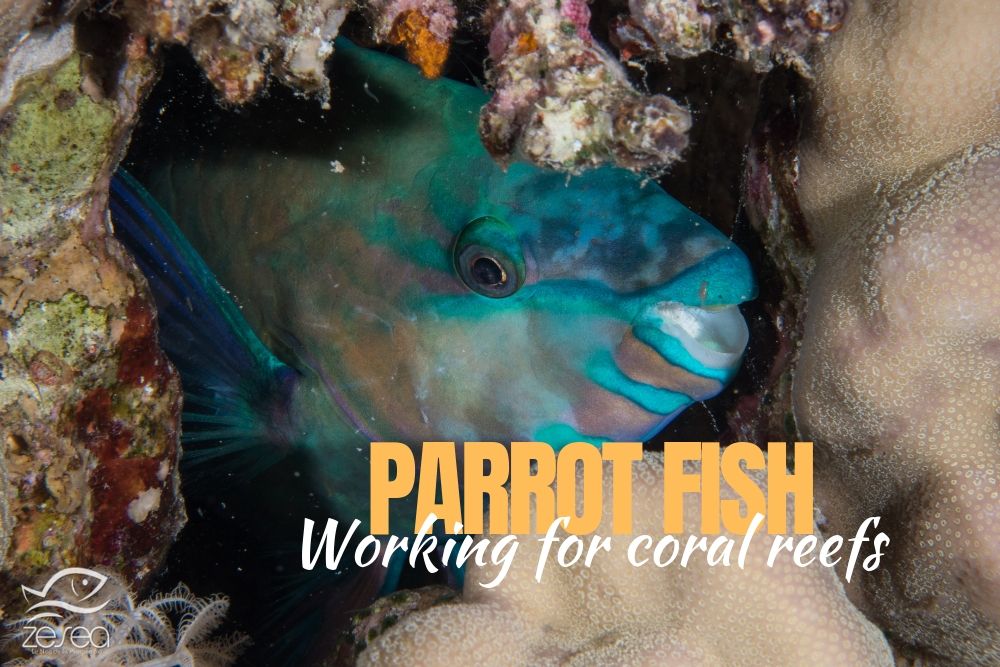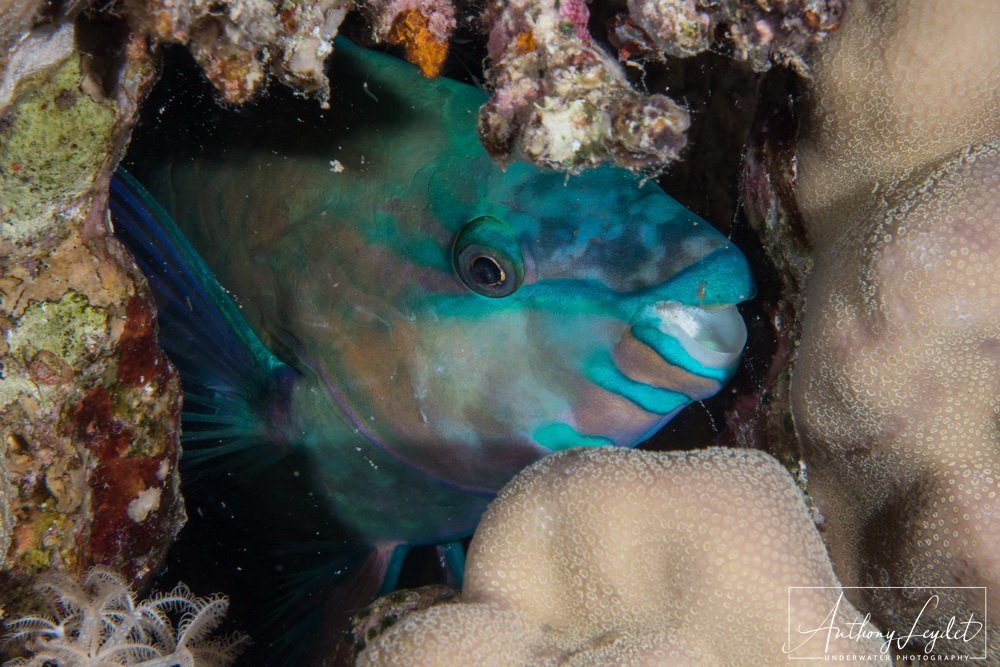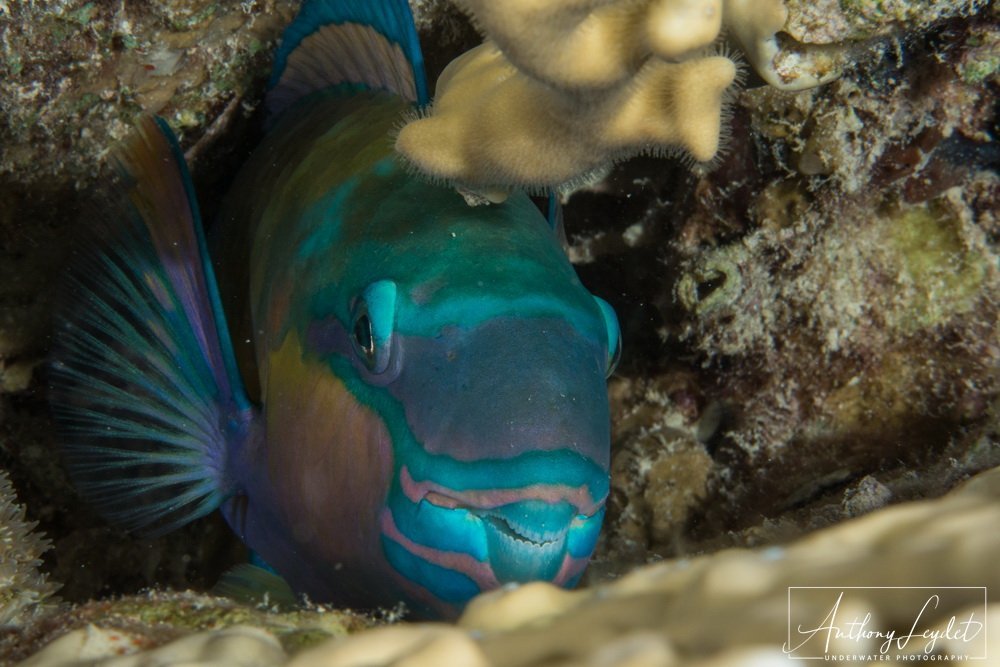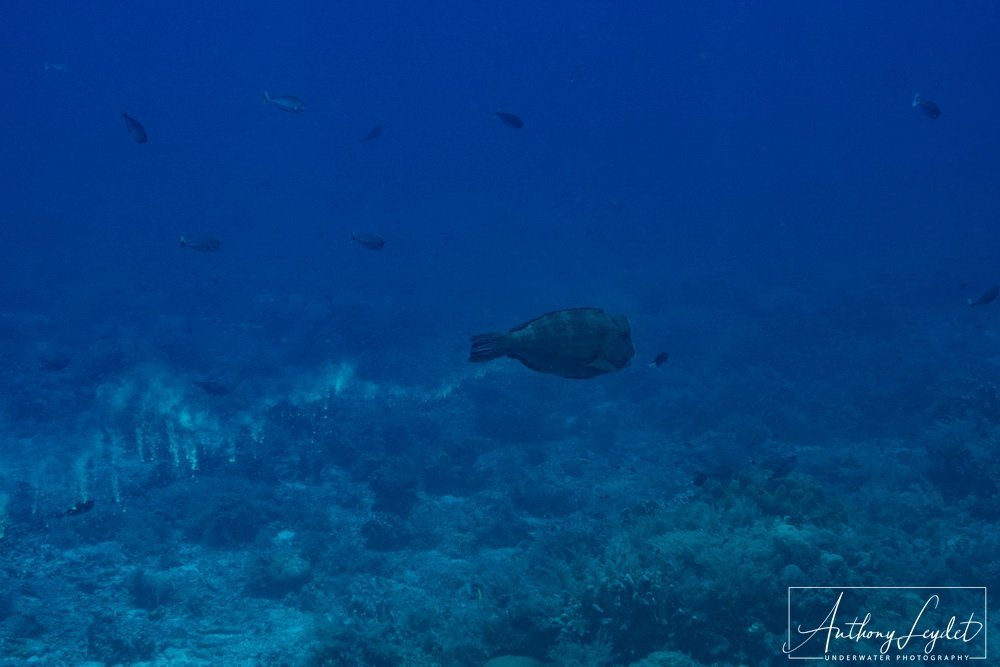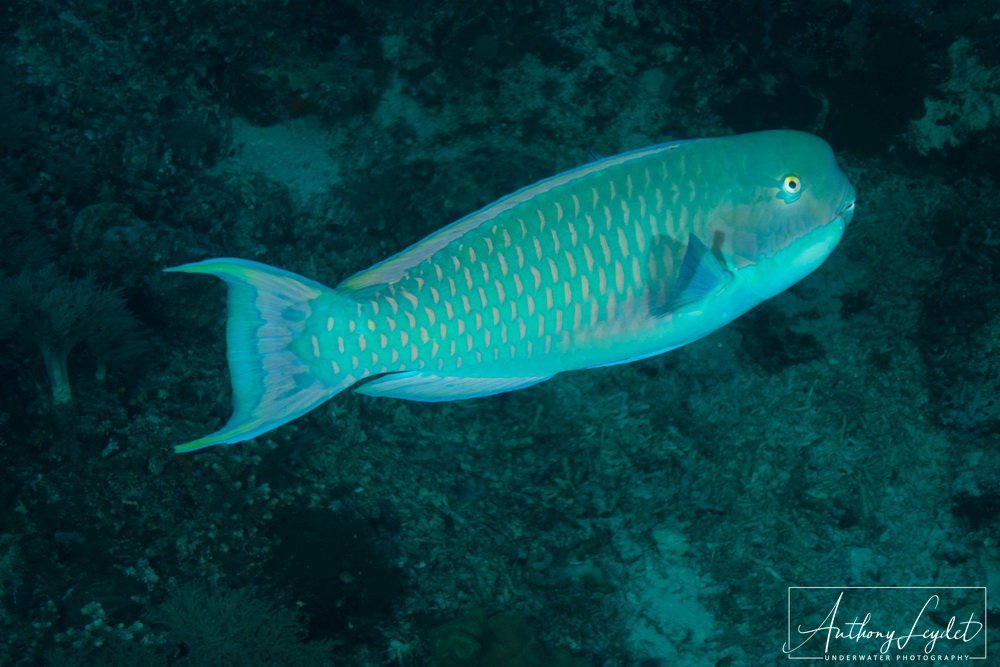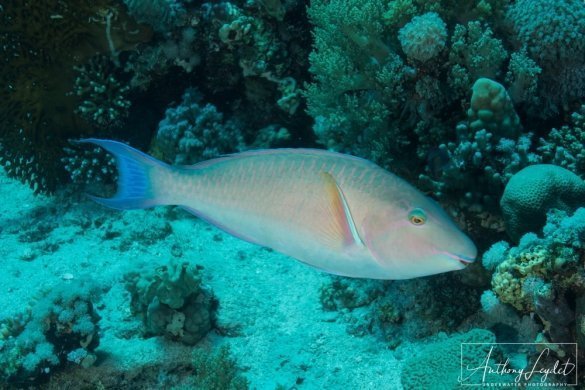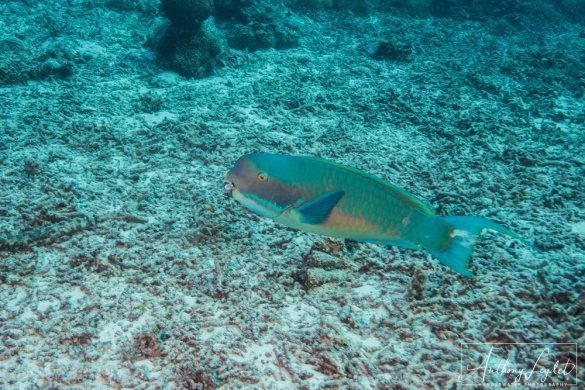Sommaire
Aren’t these beautifully coloured fish, proudly displaying their powerful beaks at the four corners of coral reefs, surprising ? If you dive in tropical seas, you have necessarily already observed them nibbling on corals, sometimes even biting into them as you do in a chocolate bar…. Parrot fish, however, play an essential role in the proper balance of coral ecosystems. So here are 10 important facts that will help you get to know the friendly reef residents better….
1 – Who are the parrot fishes ?
Parrot fish belong to the Scaridae family, and are close cousins of the wrasses. There are about a hundred species, divided into 10 genius, whose individual sizes range from 20 to 130cm in length.
2 – Where parrot fish live ?
Scaridae inhabit all the seas of the planet in tropical or subtropical areas. They are particularly well represented throughout the Indo-Pacific. There is even a species present in the Mediterranean, Sparimosa cretense, mainly in the south and eastern Mediterranean, but its range seems to be extending increasingly northwards, probably due to warming waters.
3 – The largest of the parrot fishes
Bolbometopon muricatum is a name that may not speak to you, but it is certain that if you have crossed it during one of your dives, you have been impressed… The Bumphead parrot fish is the most imposing of the parrots, with a body that can reach 1m30 long ! Very recognizable by its hump on the forehead, it is sometimes confused with the Napoleon fish, of similar size. It is a calm fish, which is not easily approached by divers. It is common to observe groups of several dozen individuals.
4 – A cocoon to spend the night safely
It is one of the great curiosities of parrot fish, even if it does not concern all species. Some are indeed able to coat themselves in a mucus cocoon in order to spend the night safely. Parrot fishes usually settle in the middle of the corals at nightfall. By secreting mucus, thanks to glands located at the level of the opercules, these species offer themselves a bubble that protects them from the “outside world”.
5 – The “beak” of the parrot fish
This is a major characteristic of parrot fish. Their teeth are welded together (although they can still be distinguished for most species), giving them the appearance of a beak in their mouths. Made of fluorapatite, one of the hardest bio-minerals in existence, their beaks are more resistant than some metals, such as gold or silver. Seeing how parrots like to bite into corals, you can quickly understand the power of their beaks.
Considered as herbivores, parrot fish, depending on the species, graze on the algae that grow on the surface of the corals or literally crunch the corals. Thus, they also ingest coral polyps, and therefore animals. To compensate for wear, their teeth are constantly growing !
6 – Parrot fish, large-scale sand producers !
While feeding, parrot fish scrape or ingest pieces of coral all day long, in order to extract the algae they are fond of. They have pharyngeal teeth that are used to crush pieces of coral to release the algae that the fish will digest.
At this rate, it is considered that a parrot fish can transform up to one tonne per year of corals into coral sand ! This sand, which makes up a large part of their excreta, and which falls to the bottom, will help to stabilize the corals. It is also he who will form beautiful white sandy beaches….
7 – A special swim
Like wrasses, parrot fish use their pectoral fins almost exclusively for swimming. Their caudal fin is only rarely used, for example for acceleration in the event of danger.
8 – The multiple colors of the parrot fish !
It is not always easy to identify the different species of parrot fish, especially in areas where many species coexist. Indeed, the colours and patterns of the parrot’s coat change over the lifetime. First there are juveniles, then an initial adult phase and finally a terminal adult phase. But also intermediate deliveries, especially concerning sexual transitions.
9 – Guardian angels of coral reefs !
Parrot fish give the impression of being a real threat to corals. And yet ! The reality is quite different. Because without them, the coral reefs would be in a sorry state. By removing invasive algae from the surface of corals, parrots have a highly beneficial effect.
It has been proven that corals grow faster and are healthier when parrot fish are abundant in the ecosystem.
A team of scientists and students at Scripps Institution of Oceanography at the University of California San Diego picked hundreds of thousands of fish teeth, coral pieces and urchin spines to build a picture of natural and human-induced change on the Caribbean reefs. Scripps researcher and lead author Katie Cramer and colleagues used the empirical dynamic modeling approach to assess cause-and-effect relationships amongst community members.
“These findings reveal that parrotfish indeed have a positive and critical role in coral health, a hotly debated issue in coral-reef research that cannot be resolved with studies of modern reefs that have already been greatly altered by human activities,” said Cramer, who conducted the Panama portion of the research while a Smithsonian MarineGEO post-doctoral fellow. “Using the fossil record to analyze the natural state of reefs before human disturbance, we have conclusively shown that if we want to protect corals, we have to protect the parrotfish from overfishing.”
10 – The sexuality of parrot fish
The Scarids have one of the most complex but also the most incredible breeding strategies. Depending on the species, some fish are born male (called primary males), others are born female and become male (secondary males), and others remain female throughout their lives. Some species do not have secondary males while others have primary and secondary males.
There are three very distinct phases:
- The first phase: these are the juveniles
- The second phase: known as the initial phase, includes sexually mature males and females that are impossible to identify without internal examination or careful observation during spawning.
- The third phase: also called the terminal phase, these are the mature males who have bright and brilliant colors, so easily recognizable
They usually live in harems with a dominant male (terminal). When this fish dies, one of the early stage fish changes sex and behaviour and becomes the new dominant male. It is even possible that males in the initial phase may imitate females and try to reach a harem in an attempt to fertilize eggs.
En vous abonnant à la newsletter, vous recevrez uniquement un e-mail lorsqu'un nouvel article paraîtra !

